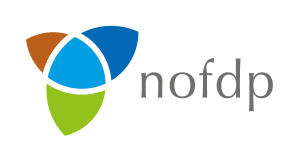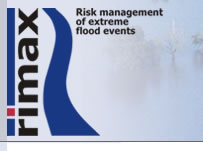The theory, technical details and a description of input and output files can be found in the BlueM-Wiki. For further information please refer to the list of publications. BlueM is used in different projects ranging form watershed hydrology over water quality modeling to Decision support systems.
Wiki
Documentation for BlueM can be found in the BlueM-Wiki. It’s a collaborative work of past and current BlueM users. Currently the BlueM-Wiki holds pages for
Currently, we are working hard on the complete translation of the BlueM-Wiki into English.
Publications
2023
Klimaszenarien zur Optimierung eines Talsperren-Betriebsplans
Hubert Lohr, Angela Rebscher, Nada Abdelwahab, Sandra Richter, Felix Froehlich, Wim Dissevelt, Helge Klopsch; Wasserwirtschaft, Ausgabe 6/2023, Germany, 2023
2022
QGIS-Schnittstelle für das NA-Modell BlueM (QGIS-Interface for the simulation model BlueM)
Martin Großhaus; Masterthesis, Frankfurt University of Applied Sciences/ Technische Hochschule Mittelhessen, Germany, 2022
Untersuchung des fluvialen Sedimenttransportes am Beispielder Rur (NRW) – Verknüpfung der Suspensionsfracht mit simulierten hochaufgelösten Abflussdaten
Felix Steudtner, Masterthesis, Rheinisch-Westfälische Technische Hochschule Aachen, Germany, 2022
2021
Überprüfung der Bodenfeuchtesimulation des Modells BlueM mit Lysimeterdaten
Sandar Blank; Bachelorthesis; HFT Stuttgart/ TH Mittelhessen, Germany, 2021
Eignung von QGIS für die Erstellung von Eingangsdaten für das Modellsystem BlueM
Fabian Schweizer; Bachelorthesis, HFT Stuttgart/TH Mittelhessen, Gießen
2018
Dynamic operation rules of multi-purpose reservoir for better flood management
Ahmed Moustafa Ahmed Moussa; Alexandria Engineering Journal,Volume 57, Issue 3, 2018 ,Pages 1665-1679; 2018
Comparison of SWMM with BlueM
J. C. Sánchez, N. Garcia, Y.S. Pribadi; Techreport; Technische Universität Dresden; 2018
Integrated river basin modeling including urban drainage systems
Michael Kissel; International Symposium on Integrated Disaster Risk Management under Multiple Climatic and Socioeconomical Scenarios. 17.09.2018 – 20.09.2018. Nanjing, China; 2018
Hydrological modelling of the Fischbachtal catchment using two sources of precipitation data
Michael Kissel, Angela Rebscher, Anna Bach, Britta Schmalz; 17th Bieennial Conference Euromediterranean Network of Experimental and Representative Basins (ERB); Darmstadt; 2018
Analyse von Niederschlagsdaten aus der Satellitenfernerkundung in der hydrologischen Modellierung am Beispiel des Fischbach-Einzugsgebietes
Anna Bach; MSc. Thesis, ihwb, TU Darmstadt; 2018
Einfluss der Eingangsdaten auf die Bodenfeuchtesimulation mit künstlichen neuronalen Netzen
Michael Kissel, Britta Schmalz; Beiträge zum Tag der Hydrologie 2018; Messen, Modellieren, Managen; Tag der Hydrologie 2018, Dresden, Germany; 2018
Prozessabbildung in hydrologischen Modellen: Ergebnisse einer Online-Umfrage
Björn Guse, Tobias Pilz, Michael Stoelzle, Helge Bormann; Tag der Hydrologie 2018, Dresden, Germany; 2018
2017
Stand und Entwicklung des integrierten Flusseinzugsgebietsmodells BlueM
Michael Kissel, Tobias Rosskopf, Michael Bach, Steffen Heusch, Britta Schmalz; Beiträge zum Tag der Hydrologie 2017; Den Wandel messen – Wie gehen wir mit Nichtstationarität in der Hydrologie um?; Tag der Hydrologie 2017, Trier, Germany; 2017
BlueM – Ein Softwarepaket zur integrierten Flusseinzugsgebietsmodellierung
Michael Bach, Michael Kissel; Darmstädter wasserbau- und wasserwirtschaftliches Kolloquium (DAWAKO) 2017; Institut für Wasserbau und Wasserwirtschaft, TU Darmstadt, Darmstadt, Germany; 2017
Niederschlag-Abfluss-Modell für die Wieseck
Josha Pinkernell: Bachelor Thesis; TH Mittelhessen, Germany; 2017
Implementierung von ausgewählten Elementen zur Modellierung der Abflussquantität und -qualität urbaner Entwässerungsstrukturen in das Softwarepaket BlueM
Tobias Rosskopf; Masterthesis, Fachgebiet ihwb, TU Darmstadt/ rivulet consult, Darmstadt, Germany; 2017
Erarbeitung eines Gewässerentwicklungskonzeptes für den Lametbach/ Brühlbach unter Berücksichtigung der Hochwassersicherheit
Stefanie Wolf; Masterthesis, TU Darmstadt/ Ingenieurgesellschaft Siekmann + Partner mbH, Germany, 2017;
2016
Implementierung von ausgewählten Elementen zur Modellierung der Abflussquantität und -qualität urbaner Entwässerungsstrukturen in das Softwarepaket BlueM
Tobias Rosskopf; Master Thesis, TU Darmstadt; 2016
Anpassung der Schmutzfrachtsimulation an die Anforderungen immissionsorientierter Gewässergütemodellierung
Michael Kissel, Jochen Hack, Britta Schmalz; Beiträge zum Tag der Hydrologie 2016; Wasserressourcen – Wissen in Flussgebieten vernetzen; Tag der Hydrologie 2016, Koblenz, Germany; 2016
2014
A generic mathematical formulation of a piecewise linear approximation of non linear hydrological storage processes
Manfred Ostrowski; Report; Technische Universität Darmstadt; Germany; DOI:10.13140/2.1.3717.1846; 2014
Blueprint for a direct integration of modules for urban drainage systems into the software package BlueM and its implementation for selected modules
Michael Kissel; Master Thesis, TU Darmstadt; Germany; 2014
Erstellung eines Niederschlag-Abfluss-Modells für die Wieseck
Tobias Dickel; Master Thesis, TH Mittelhessen; Germany; 2014
Analyseverfahren hydrologischer Zeitreihen und deren Eignung für die Implementation in BlueM.Wave
Tobias Rosskopf; Bachelthesis; Fachgebiet ihwb, TU Darmstadt, Germany; 2014
Vergleichende Gegenüberstellung von zwei Modellen zur immissionsorientierten Nachweisführung von Einleitungen in Fließgewässer
Niklas Verhoefen: Masterthesis; Hochschule Darmstadt/ SYDRO Consult
GmbH, Darmstadt, Germany; 2014
2013
Analysis of intensively used catchments based on integrated modelling
Michael Bach, Manfred W. Ostrowski; Journal of Hydrology, 485 (148 – 161); 2013
BlueM – Integrated modelling of catchments with complex land use
Michael Bach; IWA, 16th International Conference on Diffuse Pollution and Eutrophication; Beijing, China; 2013
Werkzeugpaket als mögliches Umsetzungsinstrument des Leitfadens zum Erkennen ökologisch kritischer Gewässerbelastungen durch Abwassereinleitungen
Hessisches Ministerium für Umwelt, Energie, Landwirtschaft und Verbraucherschutz; Techreport; Wiesbaden, Germany; 2013
Dokumentation ausgewählter Modellierungsansätze in BlueM.Sim und Möglichkeiten zur Weiterentwicklung
Gack, Philipp; Bachelorthesis, Fachgebiet ihwb, TU Darmstadt, Germany, 2013
2012
Sensitivitätsanalysen für das Bodenfeuchtemodul des hydrologischen Modell BlueM.Sim
Maxim Juschak; Bachelorthesis; Fachgebiet ihwb, TU Darmstadt; 2012
2011
Ganzheitliche integrierte Modellierung wasserwirtschaftlicher Systeme
Frank Reußner; PhD Thesis, TU Darmstadt; 2011
Integrierte Modellierung für Einzugsgebiete mit komplexer Nutzung
Michael Bach; PhD Thesis, TU Darmstadt; 2011
Modellprädiktive Abflusssteuerung mit hydrodynamischen Kanalnetzmodellen
Steffen Heusch; PhD Thesis, TU Darmstadt; 2011
SWQM – A simple river water quality model for assessment of urban wastewater discharges
Manfred Schütze, Jens Alex, Frank Reußner; 12nd International Conference on Urban Drainage, Porto Alegre, Brazil; 2011
2010
Model Predictive Control with SWMM
Steffen Heusch, Manfred Ostrowski; 19th Conference on Stormwater and Urban Water Systems Modeling, Toronto, Canada; 2010
Memetische evolutionäre Optimierung von Hochwasserspeichersystemen
Christoph Hübner; PhD Thesis, TU Darmstadt; 2010
Adaptive Reservoir Operation Strategies under Changing Boundary Conditions – The Case of Aswan High Dam Reservoir
Amir Mohamed Akl Mobasher; PhD Thesis, TU Darmstadt; 2010
Analysis of the time-step dependency of parameters in conceptual hydrological models
Manfred Ostrwoski, Michael Bach, Valentin Gamerith, Stefano De Simone; Report, TU Darmstadt; 2010
2009
Optimum multi-objective reservoir operation with emphasis on flood control and ecology
Robert Dittmann, Felix Froehlich, Reinhard Pohl, Manfred Ostrowski; Nat. Hazards Earth Syst. Sci., 9 (1973-1980); 2009
Optimierung von Mehrzweckspeichern im Hinblick auf Hochwasserrisiko und Ökologie
Felix Froehlich, Robert Dittmann, Manfred Ostrowski und Reinhard Pohl; Hydrologie und Wasserbewirtschaftung; 53:3 (146-153); 2009
Erhöhung der Bauwerkssicherheit und Reduktion des Hochwasserrisikos im Unterlauf durch optimierte Speicher- und Poldersteuerung unter Berücksichtigung ökologischer Belange
Manfred Ostrowski, Felix Froehlich, Reinhard Pohl, Antje Bornschein, Robert Dittmann, Stefano Gilli; Project report, TU Darmstadt; 2009
Weiterentwicklung des hessischen “Leitfadens zum Erkennen ökologisch kritischer Gewässerbelastungen durch Abwassereinleitungen”. Entwicklung einer simulationsgestützten Analyse- und Planungsmethodik
Imke Brehmer, Frank Reußner, Manfred Schütze, Dirk Muschalla, Manfred Ostrowski; KA Korrespondenz Abwasser, Abfall; 56:4 (215-217); 2009
Basin-Wide Integrated Modelling via OpenMI considering Multiple Urban Catchments
Frank Reußner, Jens Alex, Michael Bach, Manfred Schütze, Dirk Muschalla; Water Science and Technology; 60:5 (1241-1248); 2009
BlueM – a free software package for integrated river basin management
Michael Bach, Felix Froehlich, Steffen Heusch, Christoph Hübner, Dirk Muschalla, Frank Reußner, Manfred Ostrowski; Hydrologische Systeme im Wandel; Beiträge zum Tag der Hydrologie 2009; Fachgemeinschaft Hydrologische Wissenschaften in der DWA; Hennef; Heft 26.09 (109-115), ISBN: 978-3-941089-54-9; 2009
Bewertung der immissionsorientierten hydraulischen Nachweisführung des zukünftigen Leitfadens zum Erkennen kritischer Gewässerbelastungen in Hessen anhand eines Fallbeispiels aus der Praxis
Elke Firle; Diplomarbeit; Fachgebiet ihwb, TU Darmstadt, Germany; 2009
2008
OpenMI based basin wide integrated modelling considering multiple urban areas
Frank Reußner, Dirk Muschalla, Michael Bach, Manfred Schütze, Jens Alex; 11th International conference on urban drainage (ICUD); Edinburgh, UK; 2008
Erprobung der hydrologischen Module eines neuen Modellsystems zur integrierten Flusseinzugsgebietsmodellierung
Elke Dierl; Vertieferarbeit; Fachgebiet ihwb, TU Darmstadt/ Institut für
Siedlungswasserwirtschaft und Landschaftswasserbau, TU Graz; 2018
Projects & Applications
BlueM has been used in a variety of projects, some of them are listed below.
nofdp – Nature oriented flood protection

RIMAX – Risk Management of Extreme Flood Events

A framework of suitable tools was developed for analyzing flood control systems that are significantly affected by dams with new approaches that consider both ecological aspects and the safety of the dams. The methodology comprises coupled monitoring and model systems that allow for the development of dynamic operating strategies, which can render obsolete the hitherto common practice of treating operating rules and real-time control separately.
Guideline on the identification of critical pollution in water bodies through wastewater impacts
In 2012 the Federal State of Hesse published a regulative guideline for the assessment of ecological impacts of combined sewer overflows (CSOs) and waste water treatment plants (WWTPs) on receiving water bodies. In addition to the emission restrictions for CSOs and WWTPs, the new guideline poses further immission based restriction on the quantity and quality of discharged wastewater and it’s concentrations. The guideline is based on integrated and immission based modeling of both the sewer network including the WWTP and the resulting impacts including water quality processes within the receiving water bodies.
Building on developments of the Hessian pollution load model SMUSI a modeling framework was developed, where BlueM.SimR is used for the modeling of rural areas and BlueM.SimC for the modeling of receiving water bodies and water quality processes. Because this framework considers flow and storage processes of urban and rural catchment parts in detail, a better qualified identification of impacts and optimized planning of measures is possible.
Odysseus – Discrete-continuous optimization of complex dynamic water supply and urban drainage systems

The project “Discrete-continuous optimization of complex dynamic water supply and urban drainage systems” aimed to overcome these limitations of missing cooperation. BlueM.MPC and BlueM.Opt were used for model predictive control, the implementation of real time control and a multi criteria optimization of the hydrology-hydraulic water quality simulation model (SWMM).
IMCOP – Integrated immission based modelling of discharge and nutrient flux for catchments with complex landuse patterns

Most integrated model approaches in the field of urban drainage consider only one sewer system and WWTP in detail. Flow and pollution information stemming from upstream agricultural, natural or urban areas are normally considered in a simplified manner and not modelled explicitly. In contrast, the representation of urban areas is not possible in most models for diffuse sources and if, urban impacts are represented in a simplified manner.
An integrated approach for catchment wide modelling was developed. The approach is based on the different sub models of Bluem.Sim for the sub systems of a river basin: Multiple urban areas including respective sewer systems, combined sewer overflows and waste water treatment plants (BlueM.SimU); rural catchments with natural or agricultural sub areas (BlueM.SimR) and the river body itself (BlueM.SimR). Thus, impacts on water quality from all sub systems can be considered and mitigation measured can be optimized throughout the whole system.
